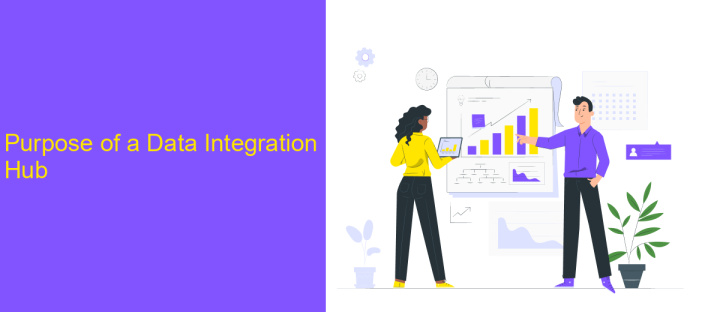What is a Data Integration Hub
A Data Integration Hub is a centralized platform that facilitates the seamless exchange and integration of data across various systems and applications within an organization. It acts as a mediator, ensuring data consistency, accuracy, and accessibility, thereby enhancing decision-making processes and operational efficiency. This article explores the core functionalities, benefits, and implementation strategies of a Data Integration Hub.
Definition of a Data Integration Hub
A Data Integration Hub is a centralized platform designed to facilitate the seamless integration and management of data from various sources. It acts as a unified repository where data can be collected, transformed, and distributed to different systems and applications within an organization. This hub ensures data consistency, quality, and accessibility, making it easier for businesses to leverage their data for decision-making and operational efficiency.
- Centralized data management
- Improved data quality and consistency
- Streamlined data integration processes
- Enhanced data accessibility
- Support for diverse data sources
By implementing a Data Integration Hub, organizations can overcome the challenges associated with disparate data systems and silos. This hub not only simplifies the data integration process but also provides a scalable solution that can grow with the organization's needs. As a result, businesses can achieve greater agility, better insights, and a more robust data infrastructure.
Purpose of a Data Integration Hub

A Data Integration Hub serves as a centralized platform designed to streamline and manage the flow of data between disparate systems and applications. By acting as a single point of control, it ensures data consistency, reduces redundancy, and enhances the efficiency of data management processes. This hub facilitates seamless data sharing and integration, enabling organizations to harness the full potential of their data assets for informed decision-making and operational efficiency.
One of the primary purposes of a Data Integration Hub is to simplify the integration process, making it accessible even to non-technical users. Services like ApiX-Drive exemplify this by offering user-friendly interfaces and automation tools that allow businesses to set up integrations quickly and without extensive coding knowledge. By leveraging such services, organizations can reduce the time and resources spent on data integration tasks, ensuring that data is readily available and actionable across all systems and departments.
Benefits of a Data Integration Hub

Implementing a Data Integration Hub offers numerous advantages for organizations seeking to streamline their data management processes. By centralizing data from various sources, businesses can achieve greater consistency, accuracy, and accessibility of their data, leading to more informed decision-making and enhanced operational efficiency.
- Improved Data Quality: A centralized hub ensures that data is clean, consistent, and up-to-date, reducing errors and discrepancies.
- Enhanced Collaboration: Teams across different departments can easily access and share data, fostering better collaboration and communication.
- Scalability: As organizations grow, a Data Integration Hub can seamlessly scale to accommodate increasing data volumes and complexity.
- Cost Efficiency: By reducing the need for multiple data management tools and minimizing data redundancy, companies can achieve significant cost savings.
- Regulatory Compliance: A centralized data hub helps ensure that data management practices comply with industry regulations and standards.
In conclusion, a Data Integration Hub is a pivotal tool for modern enterprises, offering a robust framework for managing data effectively. By leveraging these benefits, organizations can drive innovation, improve productivity, and maintain a competitive edge in the market.
Use Cases for a Data Integration Hub

A Data Integration Hub (DIH) serves as a centralized platform that facilitates seamless data exchange and integration across various systems and applications. This hub can be particularly beneficial for organizations dealing with complex data environments, ensuring data consistency and accessibility. By streamlining data flows, a DIH enhances operational efficiency and decision-making processes.
One of the primary use cases for a Data Integration Hub is in the healthcare industry, where patient data from multiple sources needs to be integrated for comprehensive care. Another significant application is in financial services, where real-time data integration is crucial for risk management and regulatory compliance. Additionally, retail businesses leverage DIHs to synchronize inventory data across different channels.
- Healthcare: Integrating patient records from various systems for better care coordination.
- Financial Services: Real-time data integration for risk management and compliance.
- Retail: Synchronizing inventory data across online and offline channels.
In summary, a Data Integration Hub is a versatile tool that supports various industries by centralizing data management and ensuring seamless data integration. This leads to improved data accuracy, better decision-making, and enhanced operational efficiency.
Considerations for Implementing a Data Integration Hub
When implementing a Data Integration Hub, it is crucial to evaluate the scalability of the solution. As your organization grows, the volume of data and the number of data sources will likely increase. Ensure that the chosen hub can handle this growth without significant performance degradation. Additionally, consider the flexibility of the hub in terms of supporting various data formats and integration methods, as this will enable seamless integration with diverse systems and applications.
Another important consideration is the ease of use and management of the integration hub. Opt for a solution that offers user-friendly interfaces and robust monitoring tools to simplify the management process. Services like ApiX-Drive can be particularly helpful, as they provide a wide range of pre-built integrations and automation features, reducing the complexity of setting up and maintaining data flows. Prioritize solutions that offer comprehensive documentation and customer support to assist with any challenges that may arise during implementation and ongoing operations.
FAQ
What is a Data Integration Hub?
Why is a Data Integration Hub important?
How does a Data Integration Hub work?
What are the benefits of using a Data Integration Hub?
Can I automate data integration processes with a Data Integration Hub?
Routine tasks take a lot of time from employees? Do they burn out, do not have enough working day for the main duties and important things? Do you understand that the only way out of this situation in modern realities is automation? Try Apix-Drive for free and make sure that the online connector in 5 minutes of setting up integration will remove a significant part of the routine from your life and free up time for you and your employees.

